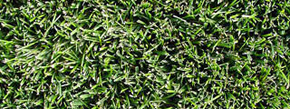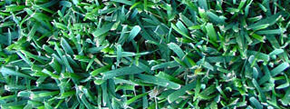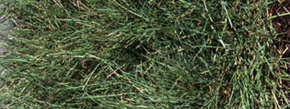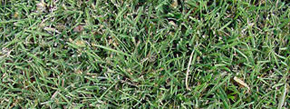Grass Characteristics
The most commonly used turf in the Rocky Mountain region. Newer improved varieties of Kentucky Bluegrass can offer dwarf-type growing habits, and some drought tolerance depending on soil condition. In addition, Kentucky Bluegrass has a strong, deep rhizome structure to aid in fast recovery from wear and tear. It has excellent winter hardiness and summer performance. It can remain green from early spring to late fall under irrigated conditions. Recommended usage: residential or commercial areas, parks, sports fields, golf courses.

Grass Characteristics
Tall fescue is a deep rooted, cool season grass. Most fescues possess dwarf-type growing habits and reduced vertical growth, and are very dense. The extensive root system can offer good drought tolerance depending on soil conditions. This turf grass has a root potential depth of 3-4 feet. Tall fescue does produce short rhizomes but has a bunch-type growth habit. Tall fescue is adapted to a wide range of soil and climatic conditions, but performs best on well drained soils. Tall fescue demonstrates good shade tolerance and can remain green from early spring to late fall under irrigated conditions. Recommended usage: residential, parks, cemeteries, commercial property and golf courses.

Grass Characteristics
There are a number of potential advantages to using bluegrass hybrids for lawn and sports turf applications in Colorado. It possesses excellent heat tolerance and, in fact, seems to grow better the warmer it gets in the summer. These hybrids produce an extensive root system, which enhances heat and drought resistance. This grass forms large, extensive and aggressive rhizomes (underground stems). Grasses that produce rhizomes are better able to tolerate traffic and will recover more quickly from traffic-induced wear. There is a good amount of anecdotal field evidence that these hybrid bluegrasses require less supplemental irrigation than some of the Kentucky bluegrasses.

Grass Characteristics
Fine fescues can be an excellent choice for low maintenance lawns. The term ‘fine fescue’ collectively refers to at least five different species of fescue (hard, sheep, Chewings, creeping red, slender creeping red) that have very fine, but tough leaves. Fine fescues can do well on rocky, sandy and infertile soils, and those that are moderately salty. Fine fescues have excellent cold tolerance and are among the most shade tolerant of all turf species. Improved fine fescues can be mixed with Kentucky bluegrass for use in lawns that have both shady and sunny areas.~~Fine fescues perform best under well-drained and drier conditions and require proper ground preparation. They typically require less fertilization than a typical bluegrass lawn. Fine fescues are used in low to moderate traffic lawns, shady lawns, and low maintenance/low traffic areas on parks and golf courses.

Grass Characteristics
Buffalograss is a warm-season grass that is green from May to September and is golden brown for the rest of the year. One full year of diligent maintenance is required before maximum results can be achieved. Buffalograss lawns are more easily invaded by weeds than other turf species. This warm-season grass species. It is a sod-forming grass that spreads by stolons (aboveground stems) which root at nodes, forming new plants. Buffalograss is native to the North American Great Plains, and displays a wide range of adaptability. Recommended usage: low traffic residential and commercial.

